Venice famously has some four hundred bridges connecting over a hundred different islands. Bridges are an important part of the Venetian cityscape, and an unavoidable part of the Venetian experience.
Most of these bridges are not, however, very old. In fact, three out of four bridges are from the 1800s or 1900s, after Venice lost its independence.
With the many new bridges, and the many filled in canals, Venice became a pedestrian city, rather than a boating city.
Old and new bridges
If most of the bridges are modern, but they often look similar to the older bridges, so how can you tell the difference?
It is surprisingly easy.
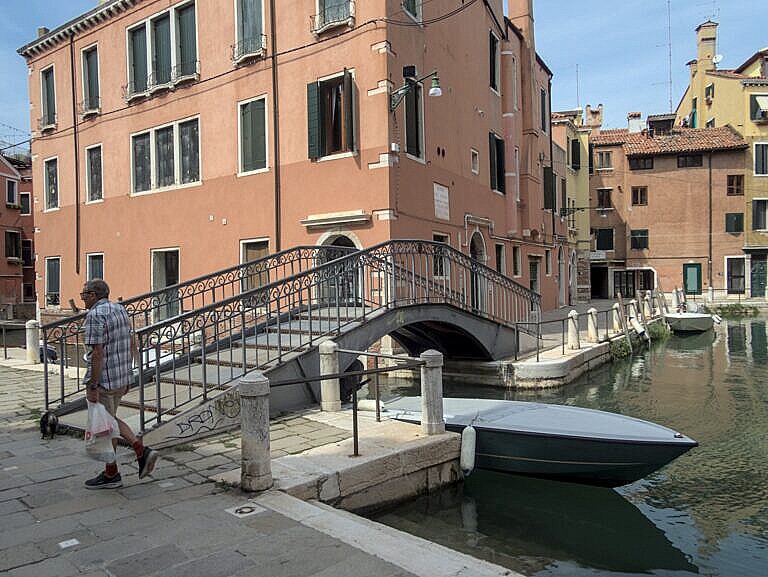
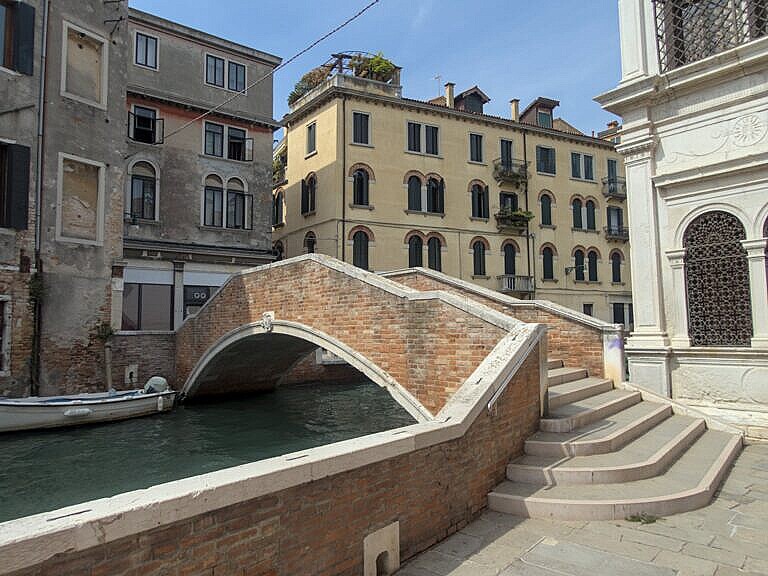
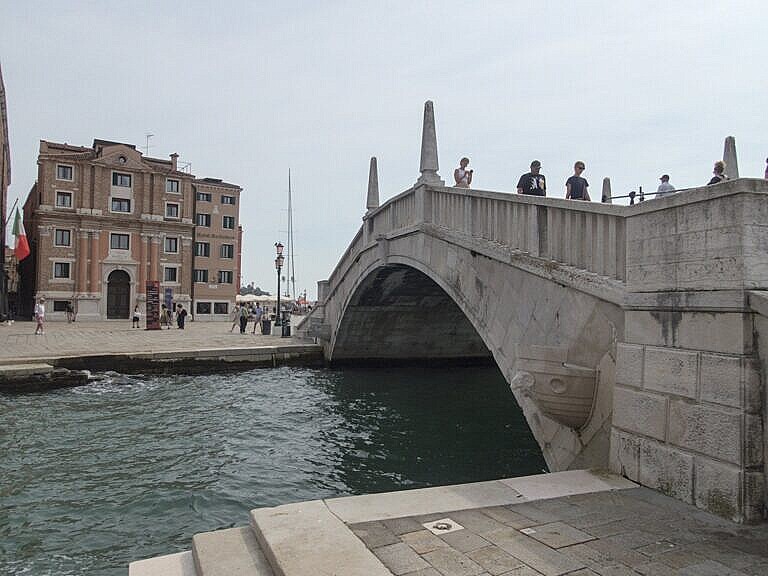
The Republic of Venice had, like modern states, different offices in charge of different tasks. We usually call them ministries or departments, while the Venetians called them procuratie or magistrati. There was a procuratia in charge of bridges and roads in Venice for much of its history.
Such an office in the Venetian republic rarely had one single man in charge. There would often be a college of three noblemen heading an office. They would serve short terms, often one year. This was a precaution to avoid abuse of power and corruption within the state administration. Checks and balances at the departmental level, one could say.
The three proveditori in charge of roads and bridges would usually sign off their contributions to the commonwealth by placing their coat of arms on the keystone on one side of the bridge. The other side would normally have the symbol of the Venetian State, the Lion of St Mark.
Therefore, whenever a bridge carries three coat of arms on one side, it is usually from before April 1797 when the Venetian Republic still existed. By looking at the exact combination of the coat of arms, it would in principle be possible to pinpoint the exact year of the decision to build the bridge.

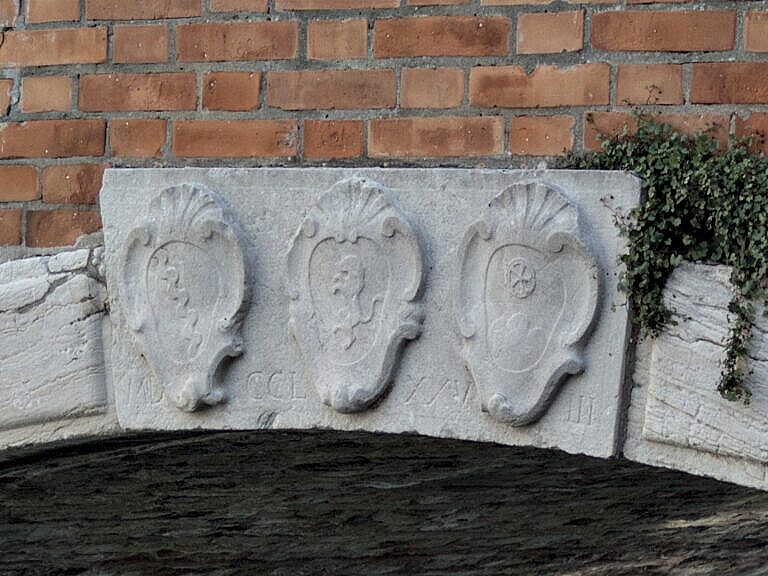
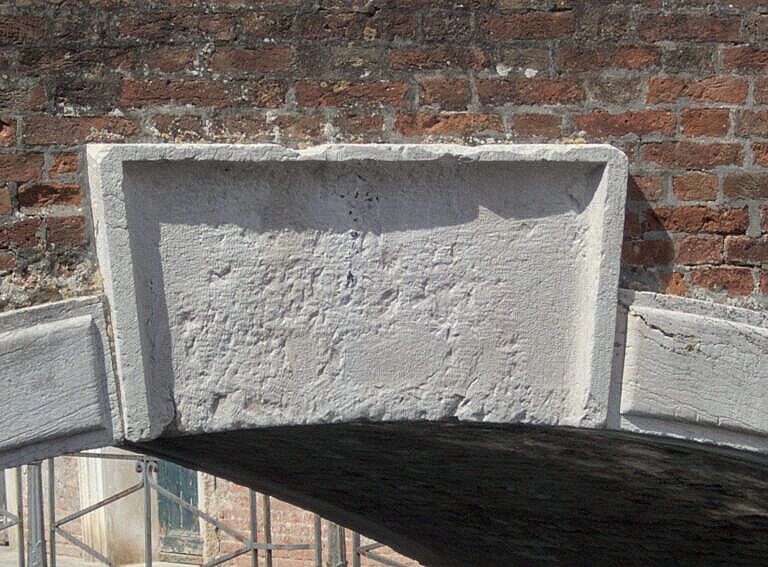
There are a few ‘fake’ old bridges around, displaying three coat of arms, which are not, however, of aristocratic Venetian families. One such example is the bridge to Sant’Elena. The symbols are of the Municipality of Venice and the Fascist regime of the 1920s and 1930s, the period when the Sant’Elena quarter was built.
Private bridges
Not all bridges without three coat of arms are modern, though.
Only the public bridges, decided by the proveditori for roads and bridges and built by the state, would carry the signs of the proveditori and the state.
There are numerous private bridges around.
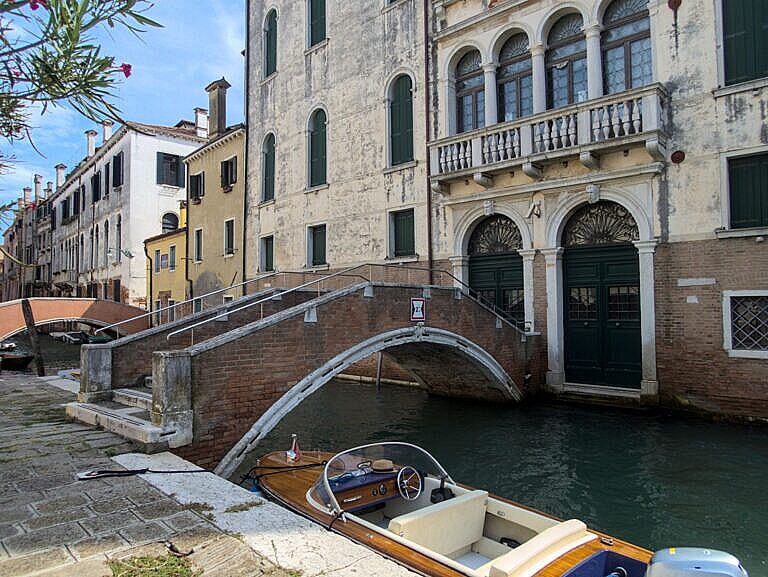
While the idea of private bridges in a city might sound a bit odd to us. However, it is not weirder than private roads, which abound in our modern societies.
Most Venetian palaces have two main entrances, one on the canal side and one on the land side. A land door and a water door. Since a house is also a status symbol meant to communicate how wealthy a family is, these entrances have to be presentable. Palaces also had secondary entrances for servants and moving goods around, but they can be anywhere.
For most palaces in Venice, this works out to two opposing doors with a hallway in-between because the house has a canal on one side and a back alleyway on the other side.
Some buildings, however, have little land access. Sometimes the only land access is through courtyards and other less presentable spaces, used only by servants. This is often the case for palaces on the corner of two canals, when surrounded by other buildings, too.
The solution is regularly to have the land door and the water door besides each other. A private bridge serves the land door, and the water door has steps down into the water.
If such a private bridge has a coat of arms on it, and many doesn’t, there’s usually just one, of the family owning the palace.
The Grand Canal
The Grand Canals divides the city in two parts, traditionally called de citra and de ultra. Its width is between 30m and 70m, so there are no private bridges on the Grand Canal.
In fact, for the over one thousand years of the Republic of Venice, there was only one bridge across the Canalazzo.
There has been some kind of bridge at the Rialto markets at least since the 1200s, though it hasn’t always been the same. The current Rialto Bridge is from the late 1500s.
Otherwise, people relied on the traghetti to cross the canals. There were over twenty of these rowed ferries, which have left their mark in many place names all along the Grand Canal.
The next bridge across the Grand Canal was the Ponte della Carità in 1854, during the Austrian domination of Venice. It was a horizontal iron structure, but corrosion damaged it over the decades. In 1933, it was demolished and replaced with a temporary wooden bridge, and renamed the Ponte dell’Accademia. As is often the case, few solutions are as durable as temporary solutions, and this is the wooden bridge we still have today.
This left a missing connection in front of the new railroad station. The Austrians built the Ponte degli Scalzi in 1858, an iron structure similar to the Ponte della Carità. It suffered the same problems with corrosion, and in 1932-34 it was replaced with the current bridge in Istrian stone.
These three bridges, one for each segment of the inverted S of the Grand Canal, remained the only ones until 2008.
The Ponte della Costituzione connects the two main points of entry into Venice, the Piazzale Roma and the railroad station. Everybody calls it the Calatrava Bridge after the architect.
The bridge has been contested from many sides. Most importantly, it is inaccessible to wheelchair users, as the Italian law demands. Attempts at remedying the problem by adding a kind of egg on rails on the side of the bridge never really worked. People called this the Ovovia, which could be translated as the ‘Eggway.’ Consequently, the President of the Italian Republic declined an invitation to the inauguration.


Leave a Reply